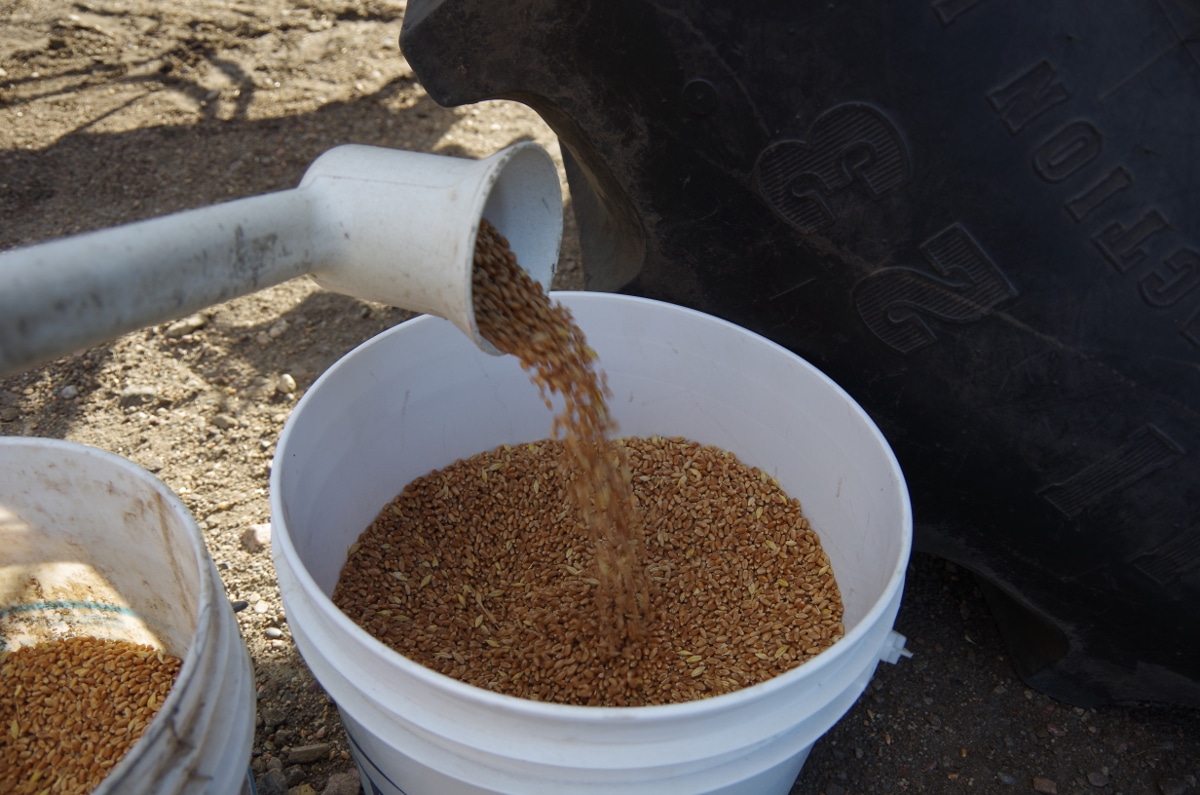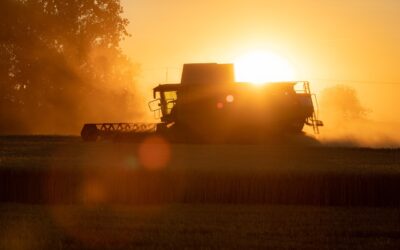Fact: the most important part of seed testing happens before the seed is tested.
Every seed test begins with a seed sample, and taking that sample properly is critical. As a lab, we can’t control how seed is sampled before it is received — that’s up to the person who did the sampling. Your sample is representative of an entire seed lot, so there’s a lot at stake in the 200 seeds we use in an accredited germination test.
When Should I Take a Sample?
There are three opportunities to take a representative sample of a seed lot: at harvest, in winter and in spring.
If sampling at harvest — when using this method, it’s critical to sample at different intervals. Take multiple samples as the truck is emptying, in order to get samples from all areas of the truck as the seed is going into the auger. Then mix all primary samples together to create a composite sample. Take two cups of the composite sample and place it in your sample bag. That will give you the best chances of getting a representative sample at harvest.
If sampling in winter — this usually involves taking a sample from the bin. Do not simply take a sample from the area near the bin door. This will not give you the representative sample you need. You’ll need to ensure you use a sampling probe to get a sample from different depths of the bin. Then mix and submit the sample.
If sampling in spring — when seed is moving from the bin to the truck for preparation for planting, you have another chance to get a good representative sample. Ensure you sample at different intervals in the process — beginning, middle and end. Mix well and put the composite sample in your sample bag.
Which Method is Better?
The benefit to sampling at harvest is you’re getting a representative sample right off the field, and you can decide whether to keep that seed lot and clean it for planting, or if new seed has to be sourced. However, germination and vigour can decline over the winter, so seed that has mid to low germination and vigour at harvest could have even lower germ and vigour come spring.
This uncertainty can be eliminated by testing your seed in the fall, winter and spring, which gives you the best possible picture of how healthy that seed is.
Related Articles
Seed Testing Critical to Ensuring Good Cereal Seed Performance in 2022






